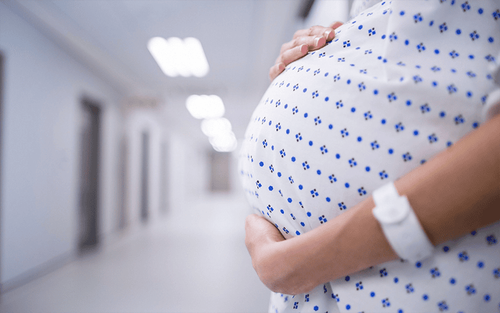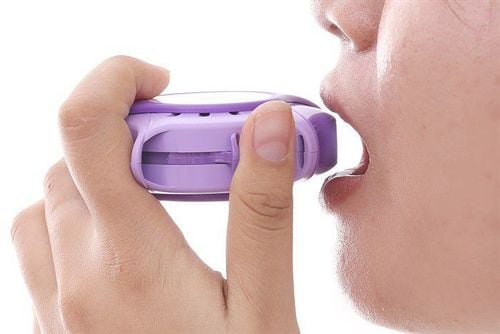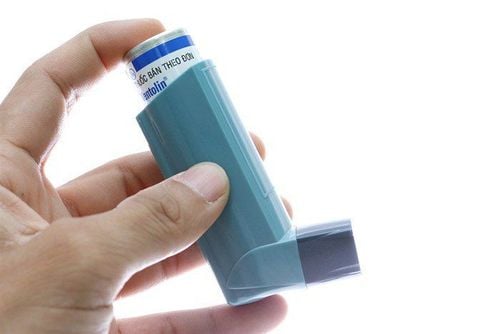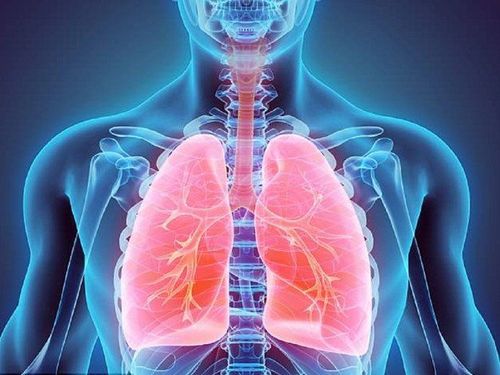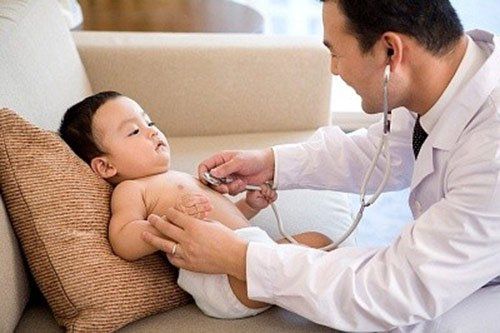This is an automatically translated article.
The article was consulted with Specialist Doctor I Dang Thi Ngoc Chuong - Department of Pediatrics - Neonatology, Vinmec Central Park International General Hospital.Pneumonia is a very common disease in young children. It is the leading cause of hospitalization and death in children with acute respiratory infections. The diagnosis of pneumonia in children is determined by doctors, based on the symptoms of pneumonia in children along with a clinical examination, which the doctor will order tests to help make the most accurate diagnosis.
1. What is pneumonia in children?
Pneumonia includes bronchopneumonia, interstitial pneumonia, lobar pneumonia. These are all inflammatory conditions of the respiratory tract and lung parenchyma, in which certain bacteria and viruses grow, creating pus and mucus in the alveoli, preventing oxygen from reaching the circulatory system. This is closely related to the typical symptoms of pneumonia.Pneumonia is the leading cause of death from respiratory diseases in children. The disease can occur at any age, but children under 2 years of age are more common. According to the World Health Organization and UNICEF, in 2015, about 16% of the deaths of children under the age of 5 were due to pneumonia.
Pneumonia occurs all year round but is common in autumn, winter and early spring. The disease is mainly transmitted through the respiratory tract. Bacteria and viruses live in the nasopharynx and are spread when children cough, sneeze, or have a runny nose. Newborns can get blood-borne illnesses at birth and right after birth.
Most cases of pneumonia in older children usually start with fever, cough, and upper respiratory tract infection (acute nasopharyngitis). More severe may be accompanied by shortness of breath, sweating, chills, fatigue and poor feeding. Pneumonia in infants and young children may or may not have fever, even hypothermia, stop feeding and often rapidly develop severe respiratory failure.
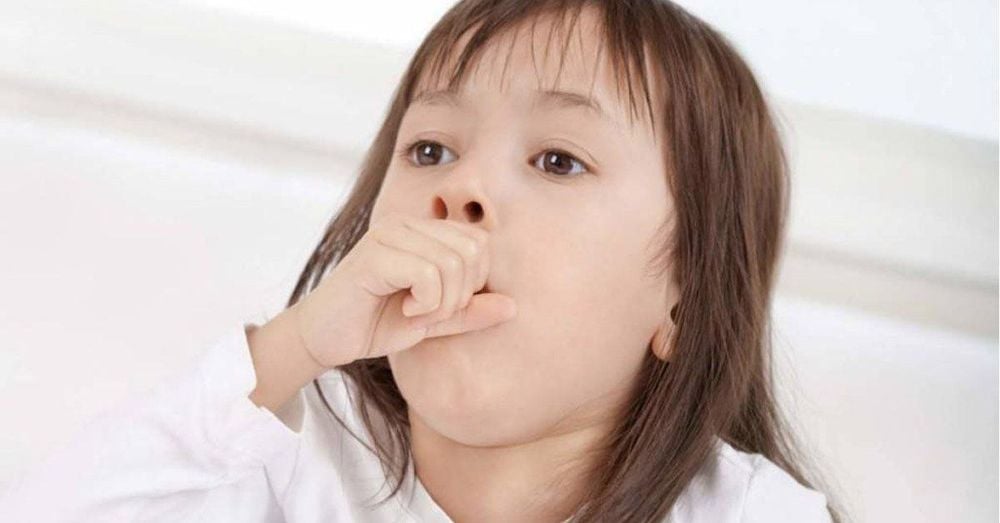
Hầu hết các trường hợp bị viêm phổi ở trẻ lớn thường khởi đầu bằng triệu chứng sốt, ho
2. Group of children at high risk for pneumonia?
Children live in cramped spaces, polluting the environment in the house and around. Especially if children have to be exposed to cigarette smoke, smoke from coal stoves... Children of school age are often susceptible to diseases or bring disease-causing agents to infect their brothers and sisters in the family. Children with low immunity (premature babies, children who are not breastfed, malnourished) or have chronic diseases such as: congenital heart disease, bronchopulmonary fibrosis, asthma, gastroesophageal reflux disease management, congenital and acquired immune disorders...3. Tests needed to diagnose childhood pneumonia
Doctors need to do a physical examination and perform laboratory tests to diagnose pneumonia. In which, symptoms such as fever, cough, rapid breathing, chest indrawing are the most important for clinical diagnosis and determining the severity of the disease. Paraclinical tests prescribed by the doctor after the parents bring a child suspected of having pneumonia to a medical facility for examination include:3.1. Blood tests A complete blood count can identify an infection. The white blood cell count increases when a bacterial infection is present. Sometimes doctors draw blood from a vein for culture. It can help identify the type of bacteria causing the infection and thus select the right antibiotic to treat it.
3.2. Urinalysis A urine antigen test can help your doctor diagnose pneumonia caused by pneumococcal (Streptococcus pneumoniae) and Legionella pneumophila bacteria.
3.3. Chest X-ray Chest X-ray helps confirm the diagnosis, contributes to determining the cause, location of infection and severity of pneumonia.
3.4. Sputum culture Your sputum taken from a deep cough can be tested in a lab to identify the bacteria that's causing the illness. This test can help determine the best antibiotic to treat.
3.5. CT scan CT scans (computerized tomography) provide more detailed pictures of the lungs in severe cases. A CT scan may also be beneficial in cases where treatment for pneumonia has not been effective.
3.6. Measurement of pulse oximetry The ideal blood oxygen saturation is above 95%. Pneumonia can block oxygen from the lungs into the bloodstream. Therefore, measuring blood oxygen levels can help diagnose pneumonia. Pulse oximetry is a simple, non-invasive technique for monitoring oxidative changes in blood oxygen levels. This test uses a device called a pulse oximeter that indirectly monitors the percentage of oxygen-containing hemoglobin in the blood.
3.7. Arterial Blood Gases An arterial blood gas test is used to measure the degree of hypoxia in the blood. For this test, a blood sample is taken from an artery, mainly in the wrist. It helps to determine the oxygen-carbon dioxide gas exchange, determining the severity of the disease.
3.8. Bronchoscopy Bronchoscopy may be indicated if you have severe pneumonia or do not improve after treatment with antibiotics. In this procedure, a thin, flexible tube with a camera is used to view the windpipe and bronchi directly. This allows the doctor to collect fluid or a small tissue sample and determine the cause of the infection.
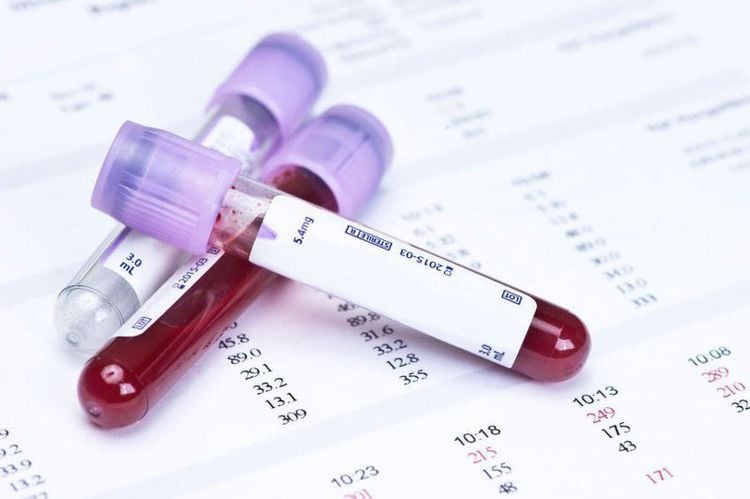
Xét nghiệm công thức máu toàn phần có thể xác định nhiễm trùng
4. When to take your child to the doctor
Whenever parents feel doubt about their child's health, they can take their child to see a doctor. Also, pay attention to the signs and symptoms of the disease. Pneumonia needs to be detected early, to avoid the disease going into the chronic stage for a long time or very difficult to cure.When parents see that their child has the following symptoms, they should take the child to see a doctor immediately:
The child has a cough, fever, headache and fatigue. These could be symptoms of mild pneumonia. You should take your child to the doctor for accurate diagnosis and timely treatment. When you see your child has symptoms such as sore throat, cough, low fever, stuffy nose, accompanied by loss of appetite, no appetite, no feeding (for infants), fatigue and lack of energy. It could be a manifestation of pneumonia in children with moderate form that needs to be detected early. Children have symptoms such as high fever, sweating, chills, red skin, difficulty breathing, wheezing. Those are signs that children with severe pneumonia need to see a doctor for the right diagnosis and timely treatment. Children at any stage are very susceptible to pneumonia. Therefore, parents should add some supporting foods containing lysine ingredients, essential micro-minerals and vitamins such as zinc, chromium, selenium, B vitamins,... to help fully meet their needs. nutrients, while supporting the immune system, enhancing resistance, reducing the risk of upper respiratory tract infections, bronchitis, pneumonia, and flu in children.
Please regularly visit Vinmec.com website and update useful information to take care of your baby and family.
Article referenced source: Ho Chi Minh City Respiratory Society





